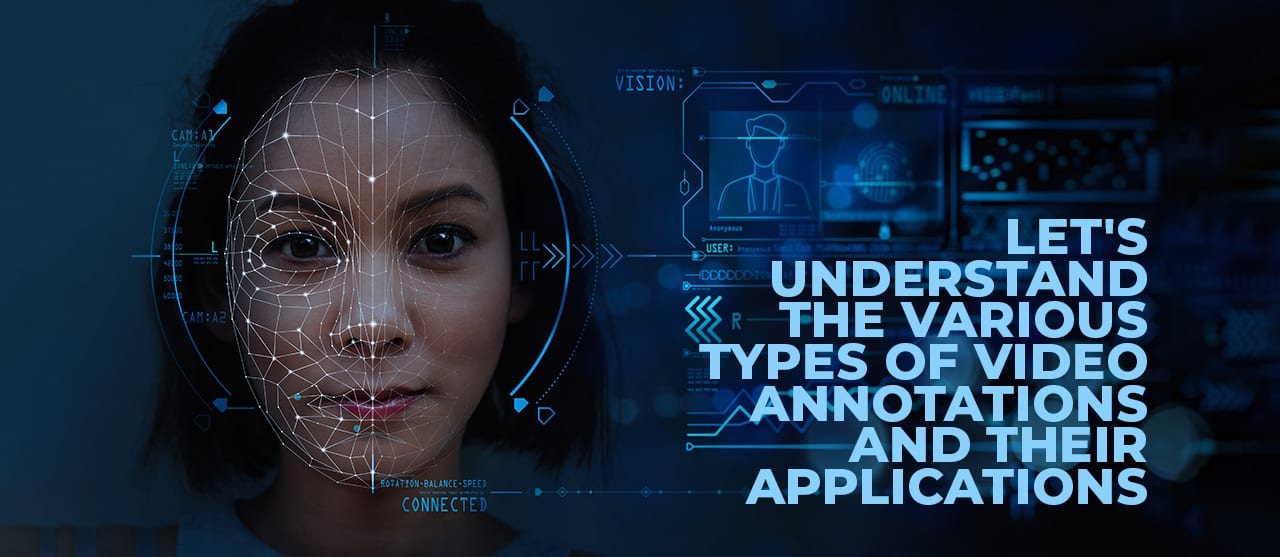
Also known as video labeling, video annotation is simply the process of adding annotations or labels to videos. Video annotation is essential to AI, machine learning, and computer vision technology. By labeling video clips, it can effectively tag information within any video and create training data for AI models. Through annotation, AI-powered computer vision models can easily identify any object appearing in the video.
There are multiple types of video annotations and applications. We will discuss each one of them in this blog.
Types Of Video Annotations
Here are the 7 common types of video annotations:
1. Bounding Boxes
This is the most widely used (and cost-efficient) method of video annotation. In this type, the video annotator draws a simple rectangular-shaped box around the image or object appearing in the video. Bounding boxes are used mostly for detecting objects, including cars, persons, and shopping items.
Some of the common applications of bounding boxes include the identification of:
- Self-driving or autonomous cars
- Insurance claims and vehicle damage
- Retail items, including clothing & accessories
- Indoor objects such as furniture, electronic systems, and cupboards
2. Polygon Annotation
Polygon annotation can label and identify more complex objects, such as houses. This form of annotation is typically used for any object with an irregular shape. This is a precise form of labeling that uses a collection of many coordinates around the target object.
Among the common use cases, polygon annotation is used in military drones and satellites to recognize irregular shapes such as rooftops, chimneys, and swimming pools. Similarly, self-driving cars can leverage this type of annotation to identify complex objects like road boundaries and walkways, which are difficult to detect.
3. Semantic Segmentation
As the name suggests, the semantic segmentation method separates the target object into multiple components or parts. This annotation method aims to locate all categories (or classes) within a data sample – with a clear distinction of their precise locations.
For instance, using semantic segmentation, computer vision models can be trained to distinguish between various types of clothing items. In this case, annotation tools can assign a color to the image pixels to identify each clothing item in an image. This method is useful in applications like creating a virtual wardrobe where customers can digitally try on clothing.
4. Keypoint Annotation
Keypoint annotation can identify key points (or landmarks) on a single object in captured images and videos. For example, keypoint annotation can determine facial features by marking the eyes, nose, and mouth based on their positions. By highlighting the object’s outline, AI models can easily classify the object by collecting its key points.
Keypoint annotation is among the most precise and accurate forms of video annotation. It’s used in a range of real-life applications like:
- Facial recognition
- Livestock behavior monitoring
- Hand gestures
- Traffic and navigational analysis
5. Landmark Annotation
Similar to keypoint annotation, landmark annotation is another method that focuses on points within the object image. Also known as dot-based annotation, this method generates multiple dots (or points) across the captured image. The connected dots make it easier to identify the object’s outline or skeleton.
This is useful in computer vision applications designed to identify objects. Some of its popular applications include:
- Human poses and expressions recognition
- Recognizing the postures of athletes during a live sports event
- Sentiment analysis (based on facial expressions)
6. 3D Cuboid Annotation
3D cuboid annotation is the recommended method in AI models that need the object’s exact dimension from any video. It is also referred to as polyline annotation. The 3D cuboid method is similar to bounding boxes, except it provides additional information on the object’s depth. In essence, it provides a three-dimensional representation of the target object.
3D cuboid annotation is useful in applications like:
- Tracking the movement of self-driving cars
- Measuring the exact dimension of a moving vehicle
- Training industrial robots in automotive facilities or warehouses
7. Instance Segmentation
The instance segmentation method in video annotation can detect and delineate every unique instance of an object appearing in the captured image. As compared to semantic segmentation, instance segmentation produces richer outputs by creating a segment map for each class category and instance.
For instance, in an image containing many dogs and cats, instance segmentation can apply bounding boxes for each dog and cat and plot the segmentation map. This helps in accurately counting the number of dogs and cats in the video image. Some of its popular applications include:
- Detecting multiple brain tumors from MRI scans
- Analyzing satellite imagery for monitoring multiple objects, including cars, ships, and sea pollution
- Detecting dents in a car or separate buildings in close vicinity
How EnFuse Can Help With Video Annotation
Video annotation is used across industries, including automotive, transportation, healthcare, and manufacturing. However, video annotation projects are often time-consuming and complex. This is why companies need a reliable annotation service provider to perform the labeling work with utmost accuracy.
At EnFuse, we provide comprehensive services in text, image, and video annotation that help in training AI models. Our AI and ML solutions help our customers benefit immensely from the data at their disposal. Connect with us today to learn more.

















Comment